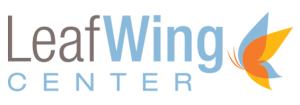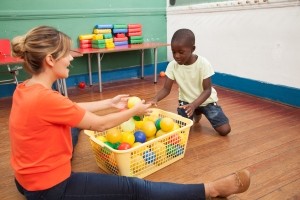What is Applied Behavior Analysis (ABA)? An elaboration
 Applied Behavior Analysis is the applied science of behavior formalized by B.F. Skinner. It is sometimes referred to as Behavior Modification, ABA, or Behavior Analysis. The theories, laws, and techniques have their foundations in years of basic research and describe some of the most fundamental things we know about behavior. Some early influences on the field of ABA include Watson, Thorndyke, Pavlov, and groups of psychologists, philosophers, and scientists in the late 1800’s and early 1900’s that pursued empirical science.
Applied Behavior Analysis is the applied science of behavior formalized by B.F. Skinner. It is sometimes referred to as Behavior Modification, ABA, or Behavior Analysis. The theories, laws, and techniques have their foundations in years of basic research and describe some of the most fundamental things we know about behavior. Some early influences on the field of ABA include Watson, Thorndyke, Pavlov, and groups of psychologists, philosophers, and scientists in the late 1800’s and early 1900’s that pursued empirical science.
Contemporary hallmarks of ABA include the Law of Reinforcement, functions of behavior, contextualism, and determinism. Let’s briefly look at these areas to get a better understanding of the field of applied behavior analysis.
Simply put, the Law of Reinforcement states that behavior that is reinforced will continue to occur or will occur more often in the future. Conversely, a behavior that is not reinforced will not occur or will decrease in occurrence over time (though, sometimes we see a short increase after reinforcement is discontinued for a behavior that has been previously reinforced).
Through a great deal of clinical experience, it has become apparent that one challenge with really applying this law and understanding its fundamental truth relates to a not having a good understanding of what reinforcement is or can be. Some general misunderstandings include the assumption that consequences most people would describe as positive or pleasant will function as reinforcers. For example, most people would assume that receiving a thank you note would be a reinforcer for a job well done. In practice, this is not the case. There are individuals that would have no interest in a thank you note, but would rather prefer a pay increase. There are, of course, some that would.
Often times, people attribute what they would find reinforcing to another person. Life shows us, this is not the case. Conversely, when we talk about reinforcement, something that we think may be reinforcing may in fact be punishing (a consequence that causes a behavior not to occur or to decrease in the future). Similarly, reinforcers can vary in their magnitude or effectiveness dependent on the environment and on what has happened in the time before the reinforcer is being used.
One final thought is that behavior is often under multiple schedules. Some of the schedules are reinforcing and some of them are punishing. The effects of the reinforcers and punishers that are a part of each schedule vary. This makes it challenging for all but only the most skilled Behavior Analysts to have a good understanding of reinforcement, reinforcers, and schedules of reinforcement. The field of Behavioral Economics is making strides in empirically describing these concerns. However, the law of reinforcement remains one of the important concepts in Applied Behavior Analysis.
One of the more recent (relatively speaking as it dates back to the very early ’80’s) concepts in Applied Behavior Analysis is behavioral function. Previous to this notion, the field was more commonly known as behavior modification and behavior was mainly changed by modifying consequences (e.g., reinforcers and punishers).
Research in the early 80’s demonstrated functional relationships between problem behavior and the conditions that reinforced it. This research led to the concept of behavioral function. Simply, a behavior must be analyzed in terms of what function (i.e., purpose) the behavior served for the individual performing it.
Nowadays, we commonly look at the inappropriate behavior that children with autism perform in these terms. We ask, “are they performing this behavior for attention? Are they performing it to escape or avoid something that they do not like? Are they performing the behavior to get access to something that they want? Are they doing it because it gives them some sort of pleasure?”
Additionally, there are two questionnaire-based assessments, the Questions About Behavior Function (QABF) and Motivation Assessment Scale (MAS), that assist users with determining the function of the behavior in question. The QABF was developed with adults with developmental disabilities and the MAS was developed on children with developmental disabilities.
Contextualism is a concept somewhat close to behavior function. In short, contextualism refers to analyzing behavior in terms of the context that it occurs. What are the characteristics of the environment? Is it loud? Quiet? Hot? Who is there when the behavior happens? What happens right before the behavior occurs? What happens earlier in the lead up to the occurrence of the behavior? What happens after?
All of these questions are things that we ask when we analyze behavior. Taking these things into consideration is why we refer to Applied Behavior Analysis as contextual.
Our final hallmark of ABA is one of the more ephemeral concepts. It is complex and philosophical in nature and often times needs to be reflected on to really get a grasp of it. This is the concept of determinism. This is also one of the more controversial concepts in ABA. Essentially, the concept of determinism says that our behavior is under the influence of our learning histories, the antecedents that occasion the behavior, and the consequences that reinforce or punish it. We are not operating under the umbrella of free will.
Like was said earlier, this is a controversial concept. Some say that our verbal behavior (i.e., thoughts) can control our behavior. In some cases, it may mitigate our behavior and, of course, it is behavior and therefore is under the same influences of antecedents, consequences and learning history. However, with the exception of the species-specific behavior we are born with, we are products of our learning histories and present environmental factors.
Applied Behavior Analysis is an elaborate science of behavior and it has been applied in many arenas (businesses, animal training, individuals with developmental disabilities, individuals with Traumatic Brain Injury, etc.,). There are many laws and principles and even more techniques based on these laws and principles. Some of the main hallmarks remain those referenced above (i.e., reinforcement, functions of behavior, contextualism, and determinism).



 When creating an educational program for students with ASD, each student’s unique characteristics present unique challenges for administrators and school support staff. An effective classroom must include a physical structure that enhances learning opportunities and instructional approaches that facilitate learning, language acquisition, behavior management, social skills, and academic goals. We can apply many of the basic principles of effective instruction that are used in within the general education classroom as we work with students with autism and Asperger Syndrome, however, there are certain strategies that have been proven to be particularly effective. These strategies provide structure and predictability to the learning process, allow students to anticipate task requirements and setting expectations, and teach a variety of skills across content areas in the natural environment, enhancing the likelihood of generalization.
When creating an educational program for students with ASD, each student’s unique characteristics present unique challenges for administrators and school support staff. An effective classroom must include a physical structure that enhances learning opportunities and instructional approaches that facilitate learning, language acquisition, behavior management, social skills, and academic goals. We can apply many of the basic principles of effective instruction that are used in within the general education classroom as we work with students with autism and Asperger Syndrome, however, there are certain strategies that have been proven to be particularly effective. These strategies provide structure and predictability to the learning process, allow students to anticipate task requirements and setting expectations, and teach a variety of skills across content areas in the natural environment, enhancing the likelihood of generalization. Applied Behavior Analysis is a scientific approach to understanding behavior. Behavior Analysis is a theory with principles and laws that are derived from research. All of the practices in Applied Behavior Analysis are derived from basic research. ABA is considered an evidence-based practice, which means that ABA has passed scientific tests of its usefulness, quality, and effectiveness. When such principles and laws are put into practice, it is said that behavior analysis is being applied, behavior analysis helps us to understand how behavior works, how behavior is affected by the environment and how learning takes place, thus the term APPLIED BEHAVIOR ANALYSIS or ABA for short.
Applied Behavior Analysis is a scientific approach to understanding behavior. Behavior Analysis is a theory with principles and laws that are derived from research. All of the practices in Applied Behavior Analysis are derived from basic research. ABA is considered an evidence-based practice, which means that ABA has passed scientific tests of its usefulness, quality, and effectiveness. When such principles and laws are put into practice, it is said that behavior analysis is being applied, behavior analysis helps us to understand how behavior works, how behavior is affected by the environment and how learning takes place, thus the term APPLIED BEHAVIOR ANALYSIS or ABA for short.




 Two common difficulties that we encounter when working with families over the years are regarding waiting and when a child is told no. These two scenarios can be overwhelming as they are often accompanied by the most intense challenging behaviors. We will go over these on this this post.
Two common difficulties that we encounter when working with families over the years are regarding waiting and when a child is told no. These two scenarios can be overwhelming as they are often accompanied by the most intense challenging behaviors. We will go over these on this this post.




 Remember those four reasons why people may engage in challenging behaviors discussed in the previous post? People may want attention from other people, may want something, may want to get out of something, or may enjoy how the behavior feels. If you haven’t already read it, we suggest reading the prior post so the information below is as useful as possible.
Remember those four reasons why people may engage in challenging behaviors discussed in the previous post? People may want attention from other people, may want something, may want to get out of something, or may enjoy how the behavior feels. If you haven’t already read it, we suggest reading the prior post so the information below is as useful as possible.
 Managing challenging behaviors can be quite stressful. Most of the time, parents just do what they can to get through the situation with as little fuss and fighting as possible. Unfortunately, this often times involves strategies that may be counterproductive, increasing the chance of these behaviors occurring in the future. If the goal is to decrease these behaviors in the long run, there are specific strategies to use based on why the behavior is occurring. Not all behaviors should be treated the same. These strategies that we will discuss below and in future posts may not always be the first strategy a parent would think of, we do recommend consultation with a behavior analyst who can provide a treatment plan and provide support for you and your family along the way.
Managing challenging behaviors can be quite stressful. Most of the time, parents just do what they can to get through the situation with as little fuss and fighting as possible. Unfortunately, this often times involves strategies that may be counterproductive, increasing the chance of these behaviors occurring in the future. If the goal is to decrease these behaviors in the long run, there are specific strategies to use based on why the behavior is occurring. Not all behaviors should be treated the same. These strategies that we will discuss below and in future posts may not always be the first strategy a parent would think of, we do recommend consultation with a behavior analyst who can provide a treatment plan and provide support for you and your family along the way.